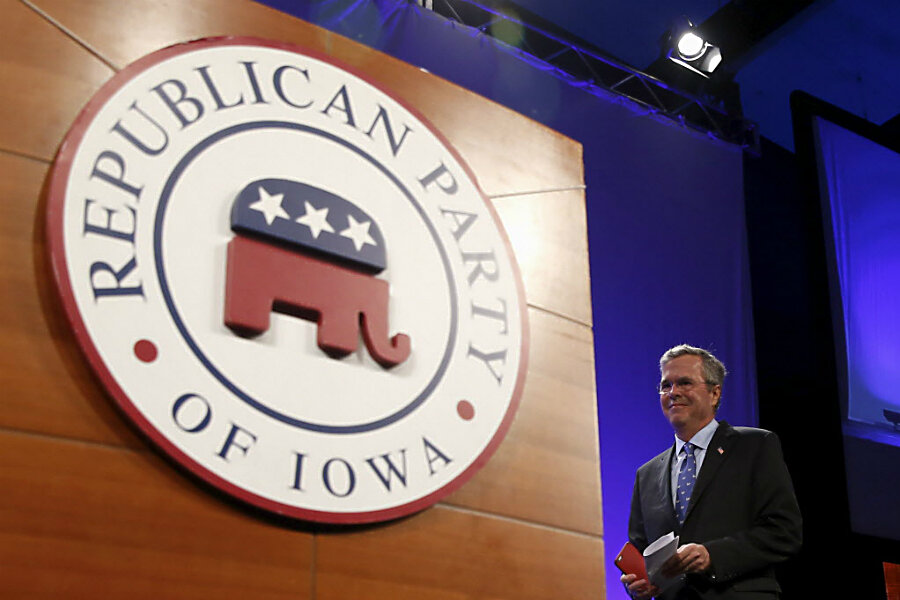Can GOP keep up with shifting demographics among supporters?
Loading...
Will Republicans be able to attract new voters in time for the 2016 election? The answer could go a long ways to predicting the future of the party.
It is also the question being asked by Politico's Daniel McGraw, who pointed out in his story that the GOP is not attracting first-time voters. In fact, the trends are going the other way - with the party's longtime bastions of support are dying off faster than those belonging to the Democrats.
Mr. McGraw did some math using exit poll numbers from the 2012 election and estimated that roughly 2.75 million people who voted for Republican candidate Mitt Romney and some 2.3 million of Barack Obama's supporters will have died by the next election. That amounts to over 400,000 more voters who voted Republican compared to Democrats who won't be at the polls in 2016.
Mr. McGraw further extrapolated the exit poll data in key swing states from the past two presidential elections, where Democrats were favored by a 65-35 margin. Looking at a 2014 Census voter participation study, McGraw took the 13 million teenagers in the 15- to 17-year-old age group right now that will be eligible to vote in 2016. If roughly the same 45 percent turn out to vote, that equals roughly 6 million new voters. If this count holds, McGraw estimated that the Democrats could stand to pick up a 2 million vote advantage from these first time voters.
“The states have different voter populations based on age, and so the influence of having more of your voter base dying is not easy to extrapolate into meaningful numbers,” Susan MacManus, a political science professor at the University of South Florida, told Politico. “That doesn’t mean having more of your voter base dying is a good thing, but it is hard to quantify.”
According to a study from the aftermath of the 2012 election by Pew Research, the average age of Republicans voters is roughly 50 years old, and that age is slightly younger for Democrat voters at 47. Therefore, an area to pay attention to between now and the election is the rate at which the major parties are adding new supporters.
In turn, the GOP's success will likely hinge on their ability to convince young voters they are the party to solve economic problems, according to Politico. But Republicans' politics in regards to social issues could result in the generally areligious and politically unaffiliated Millennials, who generally lean more liberal on social issues, to tune out the party.
Fifty percent of Millennials identify as a politically independent, and that trend is only increasing, a 2014 Pew Research study finds. Fifty-seven percent of the same voting bloc leans more liberal on social issues like gay marriage with 68 percent in support, marijuana legalization (69 percent in favor), and providing a legal path to citizenship for illegal immigrants with 55 percent in favor.
They are also retreating from religion, which is another warning sign for GOP strategists. Only 36 percent of Millennials consider themselves "religious."
Here's how the Christian Science Monitor reported the effect "generation unaffiliated" will have on the future of the Republican Party that will eventually have to come to grips with its aging core base.
White evangelical Christians, who typically take a conservative stance on social issues such as gay marriage and abortion, have traditionally been a loyal voting bloc for the Republican Party, while the Democratic Party has positioned itself as a party for minorities and nonbelievers, in addition to people of faith.
While the number of Evangelicals hasn't changed much, the number of unaffiliated Americans has, and they are becoming increasingly organized and vocal in their campaign to keep religion out of public life...
In 2012, Republican nominee Mitt Romney received 79 percent support among white Evangelicals, 59 percent among white Catholics, 54 percent among non-Evangelical white Protestants, but only 33 percent among nonreligious white voters.
A 2014 Pew Research study on religion America showed that the number of religiously unaffiliated 18-26 year-olds had increased more than 10 percentage points up from 25 percent in 2007. The Pew data also poked holes in the notion that people become more religious as they age.
“It’s not that they start unaffiliated and become religious,” Alan Cooperman, director of religion research at Pew Research told the New York Times. “In fact, it’s the opposite.”






